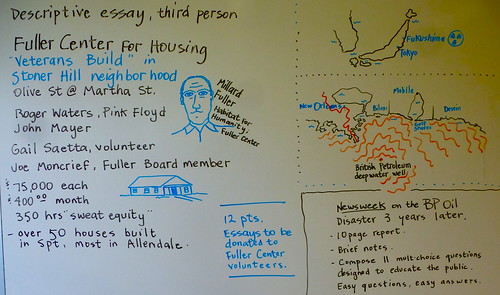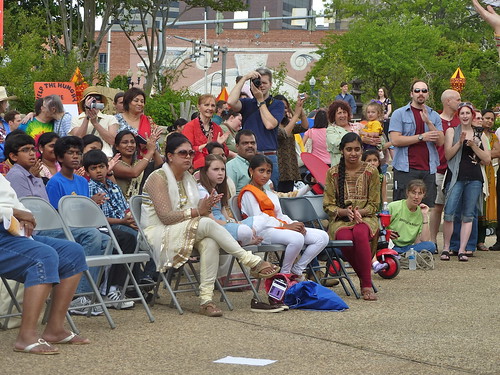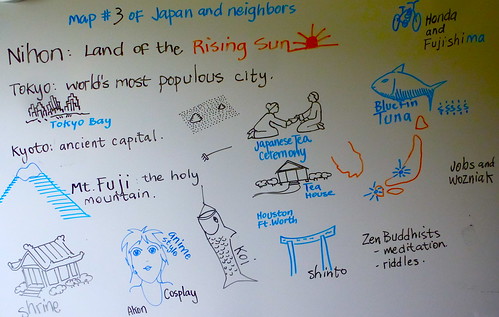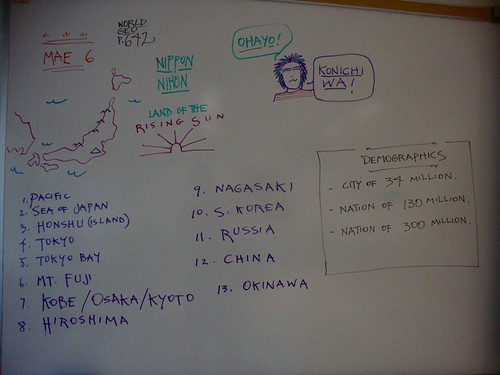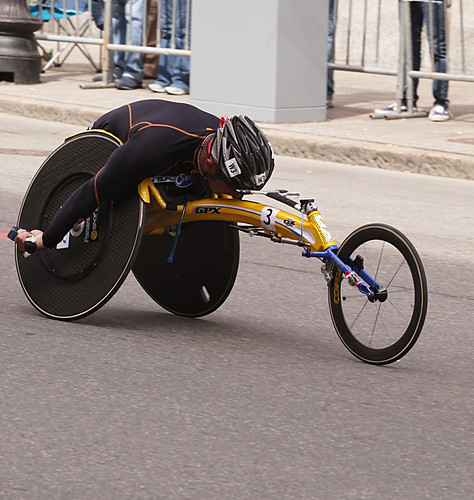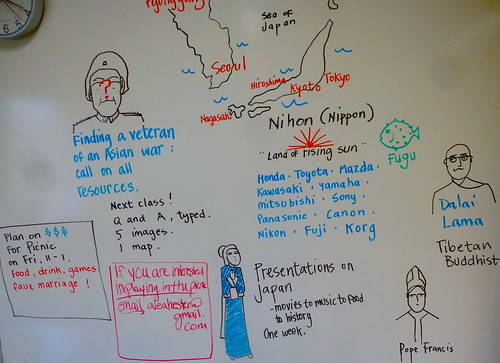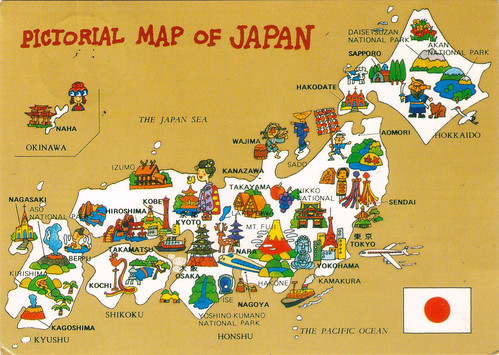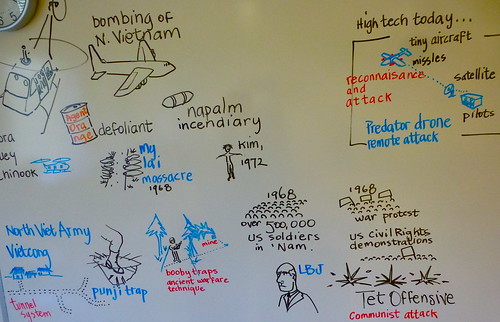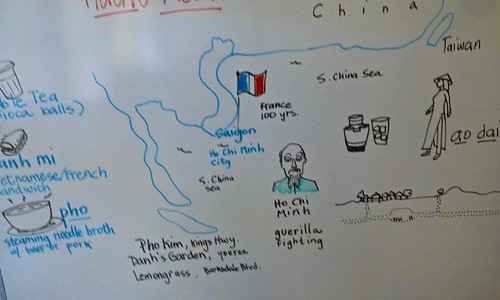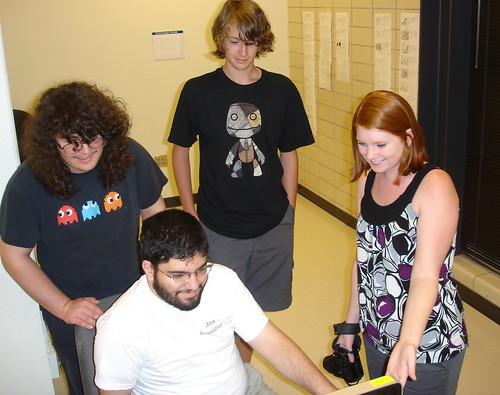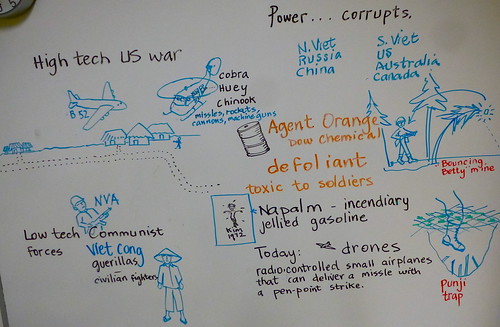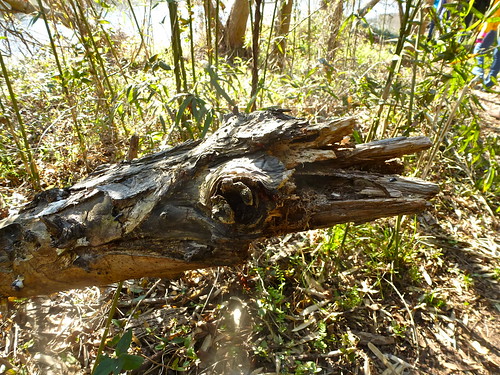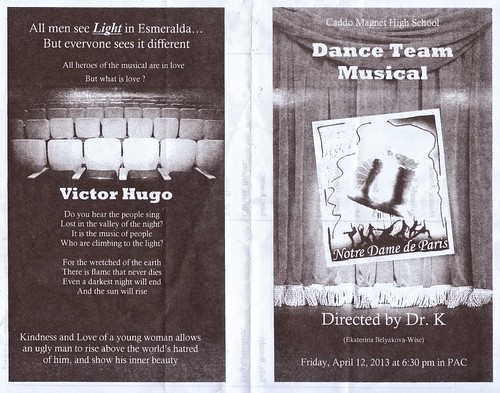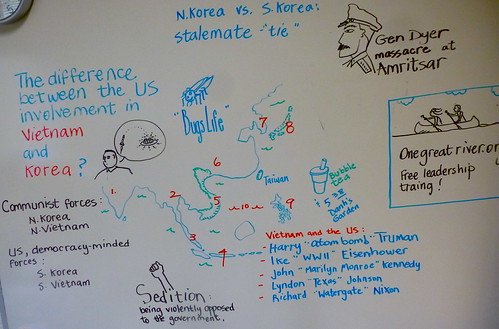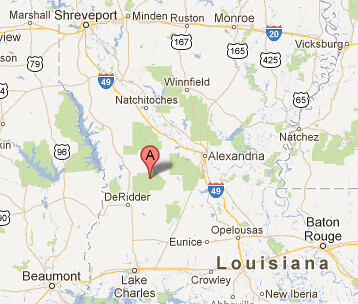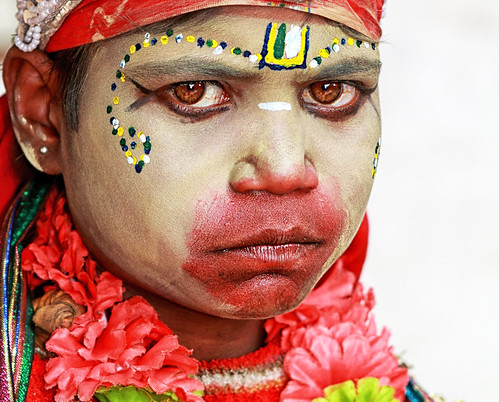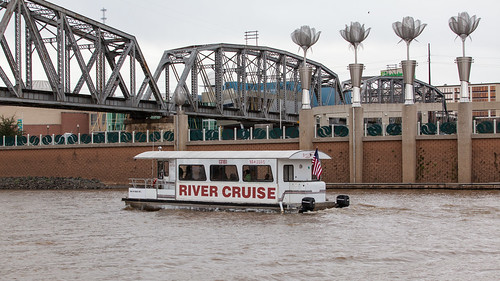Fuller Veterans Houses essays complete.
Now, make an 11-question public awareness quiz about the most important facts in the BP Oil Disaster quiz. All multiple-choice. Jazzy title.
Make the quiz easy and the answers easy. The idea is to educate.
Tuesday, April 30, 2013
Fuller Housing essay and BP Oil Disaster notes
Monday, April 29, 2013
In-class reading and question-writing project on the BP Oil Spill
A 10-page version of an overview of the BP Oil Spill is being read in class this week.
It is edited from What BP Doesn’t Want You to Know About the 2010 Gulf Spill
The 2010 Gulf of Mexico oil spill was even worse than BP wanted us to know.
by Mark Hertsgaard | April 22, 2013. Newsweek Magazine online, The Daily Beast.
Along with reading, students are expected to
- take notes.
- be able to discuss the issues raised.
- know the basic facts of the disaster.
In groups, students will write 11 multiple choice questions designed to raise public awareness of the calamity. In other words, easy and basic questions with easy answers. Colorful title.
Answers quietly added to bottom of the page. Names of students in the group.
Sunday, April 28, 2013
Presentations this week in Asian studies, moving from Japan to Korea and China
Plan to make another Asian presentation
- six images of Korea
- map
- documentation
- factoids
- colorful title
Topic areas
- North Korea profile
- N. Korean Communist dictatorship
- N. Korea threats to world stability
- Korean history
- Korean sports, cooking, technology, manufacturing, art, etc.
12 pts.
Presentations on Wed, Th, Fri.
Friday, April 26, 2013
Social studies in action: students observe, question and write about the Fuller Center for Housing, Veterans Build

Fuller Center for Housing, Veterans Build; Caddo Magnet HS students. Gail Saetta of One Small House, liaison to contributor Pink Floyd musician Roger Waters., a photo by trudeau on Flickr.
Students observing the Fuller Center volunteer house construction project adjacent to Olive St were introduced to social change in action.
Martha St, a neglected street in the Stoner Hill neighborhood, is the site of the building of 4 houses - dedicated to impoverished veterans.
The Fuller Center house plan is designed to be affordable to people of limited means. Yet it is not a give-away program.
- All house applicants must participate in 350 hours of non-paid work called "sweat equity" prior to qualification.
- Residents take on mortgage payments of about $400 per month.
- By building new houses instead of patching old ones the Fuller Center intends to raise the standards and spirits of discouraged neighborhoods.
Fuller Center is a national organization created by the late Millard Fuller (1935 - 2009), an attorney, missionary and philanthropist from Alabama. Honored by Presidents Carter, Clinton and Bush, he developed Habitat for Humanity Intl. In 2005 he founded the Fuller Center for Housing.
Volunteers from NY, California and Ohio have converged on Shreveport to work.
Gail Saetta of One Small House, an organization that ordinarily builds dwellings in Mexico and Haiti, described her outreach to Roger Waters, contributor and famed as a musician in the band Pink Floyd.
Famed musician John Mayer spent a day painting a Fuller house on Martha St. On June 1 CBS news star Diane Sawyer is scheduled to broadcast from the Martha St site.
As visits to the site continue, students are encouraged to watch their steps - boards and nails are everywhere - and ask as many questions as possible.
A descriptive essay, "Social studies in action," will be written in class.
Tuesday, April 23, 2013
Monday, April 22, 2013
Magnet geography / Japan
Bluefin Tuna $$$
- spicy raw tuna (key to killing bacteria is quick freezing)
Nori
- seaweed dried and cooked for the international market; used in suchi.
Wasabi
- Japanese horeradish; powerful spice.
Gari
- pickled ginger, thinly spiced; to cleanse palate and is germicidal.
Koi, or carp
- aquaculture; protein from a fish that Americans would not find tasty.
Bento
- boxed lunch.
Zen Buddhism
- emphasis on meditation and riddles.
Shinto
- traditional religion.
- "hai, "yes." Iie, "no."
Thursday, April 18, 2013
Boston and Tokyo
1. Place Boston on a sketch map of Connecticut, Rhode Island, New Hampshire, Vermont, New York and Massachusetts.
2. List 3 ways in which the Boston Marathon is notable.
3. The length of a race called a marathon, in approximate miles: a) 9 b) 18 c) 26.
4. Pyongyang and Seoul: briefly identify.
5. Honshu, Hokkaido, Kyushu and Shikoku are Japan's principal __ .
6. Sketch the location of the holy mountain, Mt Fuji, on a fresh map of Nihon.
7. A city with a metro population of about 4.5 million: __ .
8. City with a metro population of ome 35.6 million: __ .
9. The latitude of Tokyo is about __ degrees __, which is closer to a) Shreveport than NYC b) NYC than Shreveport.
10. What makes you guess that there must be a Tokyo Marathon?
Wednesday, April 17, 2013
Wheelchair competitors, blind runners among 20,000 participants in Boston Marathon
Begun in 1897, inspired by the success of the first modern-day marathon competition in the 1896 Summer Olympics,[1] the Boston Marathon is the world's oldest annual marathon, says Wikipedia. It ranks as one of the world's best-known road racing events.
Annual attendance: 500,000
Runners: 20,00
Though starting with 18 participants in 1897, the Centennial Boston Marathon in 1996 established a record as the world's largest marathon with 38,708 entrants, 36,748 starters, and 35,868 finishers.
26 miles, 385 yards length conforms to Olympic standard.[6] Marathons celebrate a messenger's dash from Marathon, Greece, to Athens to announce an unlikely Greek victory.
Women were not allowed to enter the Boston Marathon officially until 1972. In the 60's many women ran the course in defiance of the rules.
The Boston Marathon has a proud tradition of extending the challenge of the marathon to people with disabilities. In 1975, the Boston Marathon became the first major marathon to include a wheelchair division competition.
It also hosts a blind/visually impaired division and a mobility impaired program. In 2013, 40 blind runners participated.
Tuesday, April 16, 2013
Presentation on Japan next week, Ap 24-25
Have fun choosing and making a lighthearted presentation on Japanese culture. 15 pts.
Powerpoint or other format if OK'd by your teacher.
- Fun title.
- Photos on each visual page (aka slide).
- Map.
- Documentation at end.
- Total of 6 pages / slides.
- Factoids, or bulleted notes.
Typical topics -
- Hayao Miyazaki
- Animated movies.
- Manga.
- Zen Buddhism
- Mt Fuji
- J-pop group.
- Tokyo, or one section of the city, such as the Ginza.
- Tokyo's Harajuku area, center of youth fashion.
- Sega, Nintendo and Japanese game companies.
- Auto manufacturers such as Honda, Mazda, Toyota, Mitsubishi.
- Music-related companies, such as Sony, Panasonic, Yamaha and Korg.
- Motorcycle companies such as Kawasaki, Suzuki, Honda.
- Geishas.
- Samurai.
- Swords.
- Ships; the junk.
- Noodles; soba.
- Sushi and sashimi.
- Tempura; also, Benihana of Tokyo.
- Hiragana, Katakana, Kanji.
- Historic art and architecture.
- Modern art.
- Robots.
- Karesansui and other gardens.
- Kimono and traditional clothing.
- Judo and martial arts.
Monday, April 15, 2013
Vietnam veteran interview due Wed or Thurs, Ap 17, 18
Using the adults around you to find a veteran of an Asian war to interview is the heart of the Vietnam Vet Interview project.
Most students cannot do it alone. be smart in thinking of resource people that will connect you to a veteran.
The emphasis in this project is use of the Primary Source.
See the earlier post on this assignment.
5 images. Map. Title.
Sunday, April 14, 2013
Essay on the US in Vietnam in the 1960's
Essay on the US in Vietnam in the 1960's must be written around these notes . . .
11 pts. In class.
- names (presidents, etc)
- events (battles, treaties, etc)
- dates (years)
- weapons (high and low tech)
- acc to teacher Robert Trudeau, acc to Wikipedia, etc.
- colorful title and opening
Friday, April 12, 2013
Danh's Garden, Pho Kim, Lemongrass: a taste of Vietnam in Shreveport
Banh mi sandwiches, bowls of Pho, Vietnamese iced coffee, Thai curry, Chinese bubble tea: there are many tastes to be enjoyed locally. For bonus points, I might add.
Thursday, April 11, 2013
Planning your summer: LSUS Continuing Education
Summer classes for young adults are being announced by LSUS, BPCC and other education centers.
One of the programs I know best is LSUS Continuing Education or "CE."
Check their listings if you want to investigate a high-value summer.
Wednesday, April 10, 2013
Vietnam conflict: low tech vs high tech
Helicopters called the Cobra, the Huey and the Chinook epitomized the high tech wealth of US forces in the Vietnam conflict. They were armed with rockets, cannons and machine guns.
US soldiers also used radio phones in the field - forerunners of the cell phone. In addition to copters, jet fighters and B-52 bombers were used against the North Viets.
Tuesday, April 09, 2013
One Great River: a leadership program for 15 Magnet students that is fully funded
Your teacher is happy to be able to recruit 15 Caddo Magnet Students to join the One Great River program. These 15 students and 2 adult staff/volunteers will be engaged in a series of outdoor adventure training events including:
A weekend team building retreat
A confidence building wall climbing day at Centenary College
A high ropes challenge course at YMCA Camp Forbing
A mountain biking and kayaking day at Lake Bistineau State Park
They will also be trained to present mini-lessons in physical exercise and healthy eating to younger youth.
The program will kick off on April 20th at LSUS with the students taking a pre-survey (Pennington Biomedical Research Center youth survey) and a pre Physical Fitness test (Fitness Gram). Once they have completed the survey and fitness test, we will keep them at LSUS the remainder of the day to do the Team Building and Trust activity. We are currently working on the scheduling of the additional activities.
Over the years I have seen terrific responses about the One Great River program from Magnet students and parents. It will be worthwhile in the short run and in the long run, as you prepare your portfolio of activities for entrance to a top college.
Our contact:
Tammie Harris
One Great River
P.O. Box 44349
Shreveport, LA 71134
318-798-0880
www.onegreatriver.org
CMHS Dance musical Fri, Ap 12, 6:30 pm, PAC
Lights, camera, graceful action: please plan to attend the dance program directed by Katerina Belyakova-Wise. Over 40 students have a part in the show. Lighting by Will Flavin will be spectacular.
Serious differences between North and South Korea
Symbols that illuminate the differences between the 2 Koreas:
- Nuclear warheads vs. Samsung & Hyundai
- communist dictatorship vs. free market democracy
- near-famine levels of poverty vs. one of the highest standards of living in Asia.
- China vs. the US
Cities:
Pyongyang
Seoul
Japan
China
Russia
Sea of Japan
Yellow Sea
US Korean War, 1950 - 1953
"the forgotten war"
Gen. McArthur vs. Pres. Truman
The China factor: don't wake the sleeping giant.
M*A*S*H, the sitcom.
dishes: bulgogi, kim chee
Sports, acc to wikipedia.org
Taekwondo, a popular martial art, originated in Korea. Taekwondo means the way of the foot, the way of the fist, and the way of life. It became standard military training in South Korea, and in 1961 the rules were standardized. Taekwondo became an official Olympic sport in 2000. Other Korean martial arts include hapkido and taekkyeon.
Baseball was first introduced to Korea in 1905 by an American missionary named Phillip Gillette and has since become the most popular spectator sport in South Korea.[31]
Other popular sports in South Korea include basketball, football, golf, tennis and ice hockey. Women's golf is especially strong, with over thirty South Koreans playing on the world's leading women's tour, the U.S. LPGA Tour, including stars such as future Hall of Famer Se Ri Pak.
South Korea is also the cradle of the e-sports (electronic sports) world. Home to KesPA, e-sports has become popular in Korea with two broadcasting stations broadcasting live matches on television. South Korea has been regarded the birthplace of e-sports and also the future of e-sports. The Koreans are widely known for their e-sports, and especially in the WCG, World Cyber Games.
The real time strategy computer game, Starcraft, is extremely popular in South Korea. Live matches are broadcast on television and large sums of money are awarded to winners of various tournaments.
Magnet Campus Maintenance session, Sat, Ap 13, 9 am to noon
Everyone is included in the Clean-Up and Landscaping Session on Sat, 9 am to noon: parents, students, friends of Magnet.
Please bring gloves, gardening tools, wheel barrows, shovels, etc. And water.
Contact PTSA pres Amanda Bertrand AGB2069@GMAIL.COM to report that you're attending or with questions.
Friday, April 05, 2013
Thursday, April 04, 2013
Gandhi and India: review quizzes
Gandhi in Mumbai
1. Gandhi's first protest activities were actions against the government in __ . a) Kenya b) India c) Sri Lanka
d) South Africa.
2. Home Rule was the slogan of the Congress Party of India. It meant that the British should
a) rule from London b) give representation in Parliament c) leave India d) leave Delhi.
3. Gandhi was raised as a a) Sikh b) Muslim c) Christian
d) Hindu.
4. The religious minority of India originating in the Punjab region: a) Sikh b) Muslim c) Christian d) Hindu.
5. Gandhi began his protest activities in India soon after the end of a) WWI b) WW2 c) the US Civil Rights Movement
d) Great Depression.
6. The capital of India: __ .
Gandhi in Delhi
1. Traditional sweet scent of India packaged as a garland: a) gardenia b) rose c) lilies d) jasmine.
2. South Africans have numerous derogatory terms for Indians. Not among them: a) Sammy b) coolie c) kaffir d) pachuco.
3. On the train in South Africa Gandhi quotes a book of __ literature. a) Christian b) Hindu c) Muslim d) Sikh.
4. Gandhi uses the phrase "children of __ " to emphasize the incorrectness of racist laws. a) Brahma b) Allah c) God.
5. Car manufacturing company that produces a cheap city car: a) Nano b) Tata c) Momo d) Bapu.
6. Nefarious crop emphasized by the British in India - to be sold to the Chinese. a) indigo b) tobacco c) saffron d) opium.
7. City on the Bay of Bengal: a) Delhi b) Agra c) Mumbai d) Kolkata.
8. City on the Arabian Sea: a) Delhi b) Agra c) Mumbai d) Kolkata.
9. City called the Silicon Valley of India: a) Delhi b) Agra c) Mumbai d) Bangalore.
Gandhi in South Africa
1. Gandhi's life spanned the 19th and 20th centuries. T / F
2. Gandhi studied to be a barrister, which is a Britishism for: a) lawyer b) professor c) business man d) clergyman.
3. South Africa was a European colony at the turn of the century. It is part of the empire built by the a) British b) French c) Hindus d) Muslims.
4. In all his pronouncements, Gandhi encourages ethnic unity. That would be between the a) castes b) major social organizations c) armies d) governments.
5. Gandhi declares that being raised in a crossroads region gave him an unusual perspective on religion. He lived near a) Delhi b) Bay of Bengal c) Himalayas d) Arabian Sea.
6. What is the great social taboo of India that Gandhi wanted to change?
a) Hindu vs. Muslim b) the caste system c) the class system d) British vs. Indians.
7. Gandhi felt that the beliefs of Christianity might help people understand racism. T / F
8. Gandhi understood poverty and accepted it as inevitable in India.
T / F
9. Gandhi was not assasinated; he was assassinated. T / F
1.t 2.a 3.a 4.a 5.d 6.b 7.t 8.t
1. The Taj Mahal was built about the year __ .
2. Its construction was commanded by the emperor called the __ Jahan.
3. Jahan was the Mughal - or Mogul - emperor of ___ India.
a) northern b) eastern c) southern d) western.
4. The design of the Taj reflects a particular religion: a) Islam b) Judaism c) Hinduism d) Jainism.
5. It was built of white __ (type of stone) for Mumtaz Mahal.
6. A building that is a tomb is called a __. a) masala b) malformed c) mausoleum d) mandible.
7. The designers of the Taj were from the nation of __ . a) Persia b) Afghanistan c) Arabia.
8. There are three items of the Taj Mahal complex that identify the Shah's culture as Islamic: the mosque, the Arabic inscriptions and the towers called __ .
9. The decorative designs on the walls are called __.
10. Aside from the decorated caskets of the emperor and his wife, the interior of the Taj Mahal is empty. T / F
11. In the final chapter of his life the emperor's son, Aurangzeb, made sure his father was __.
1.1600
2.shah
3.a
4.a
5.marble
6.c
7.a
8.minarets
9. arabesques or calligraphy
10. t
11. imprisoned
Southeast Asia: where we fought, 1955 - 1973
Vietnam - divided into N and S Vietnam from 1954 - 1975 - was a Cold War conflict for the US.
Trying to stop the spread of communism, the US lost 58,000 to death and some 300,000 in casualties. Our fighting allies were S Korea, Australia, New Zealand, Thailand and, of course, S Vietnam, acc to Wikipedia.
Tuesday, April 02, 2013
Primary source interview: find a veteran of Vietnam, Korea or the Pacific; due Ap 17,18

"Please Lord, just let me live to see this day again", a photo by alan shapiro photography on Flickr.
One of the most rewarding projects of first-year social studies, according to many students and parents, is the Vietnam Vet Interview.
The most difficult part of the project is finding a veteran who can be interviewed. I will expect you to get help from your parents, extended family and friends and perhaps your minister or comparable youth leader.
My goal is to see my students sit down across the table from a veteran of a US war in Asia. So, in truth, if you can find a veteran of the Korean conflict (usually older than Viet vets) or even the rare veteran of WWII in the Pacific, you can substitute.
Vietnam is part of America's history that can guide our thinking in regards US involvement in Iraq and Afghanistan.
These Vietnam veteran questions are designed to create a low-stress interview. The primary reason for this interview is to give you experience in using a Primary Source. The material you gather will not come from a book or online entry; it will come from a person who was an eye witness. You will be gathering a bit of evidence as a student historian.
1. Name and your service branch?
2. Year(s) you served in Vietnam?
3. Your responsibilities in the service while in ‘Nam.
4. Locations you visited in Vietnam. In which place did you stay the longest?
5. The geography of the Vietnam you observed.
6. Climate?
7. Describe the people of Vietnam, both physically & psychologically.
8. Changes in your attitude toward the US in Vietnam. (optional)
9. What should teens learn about the conflict?
10. Your favorite movie or book about ‘Nam? (optional)
Add 5 war images and a map of 'Nam and you're done.
You may have the flexibility to use some 8 of the questions as you see fit. if the vet declines to interview an item, it's OK. Simply record his reason.
If the vet seems talkative, please ask additional questions. This project becomes a part of history. It might be valuable in the future in American History class or another project.
Recording the interview - via your phone, a videocam or other device - is a good idea. If you try to write down the responses both you and the interviewee might be frustrated. It is not easy to write down all the words that flow in the average interview.
Recording guidelines:
* Stop the interview and test the recording after a minute. It is easy to get weak sound and be frustrated later.
* Place the mic as close to the person's mouth as possible.
Remember: you must add 5 images of Vietnam and one Vietnam map.
15 pts. Due in 2 weeks. Ap 17 or 18.
Red River field trip: descriptive essay
Descriptive essay
- 10 pts
- 1 page, handwritten
- details! examples! quotes
- grammar, speeling, construction
-
Arf-arf! Shreveport-Bossier's Growing use of the Red River
1. Hamel's Park
- beauty and varied terrain.
- site of Spt Dog Park
2. Stoner Boat Launch and Skate Park
- ski boats, fishing boats, speed boats easily launched.
- cafe closed for the moment.
3. Fant Parkway and bicycle & pedestrian path.
4. SciPort, Louisiana's Science Center,
- regional economic engine
- Public art
- changing course of the Red River
- Railroad bridge - reminder of the end of the steamboat days;
- Riverview Fountains, a best-of-Spt amenity
5. Commerce St: once the main business of riverfront;
6. CoHab, a high-tech business center, focus on start-ups,
7. Ogilvie Warehouse apartments - historic renovation of an urban site.
8. Fant Parkway Bike & pedestrian trail - Preston St extension that connects bikers to Broadmoor.
